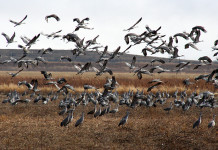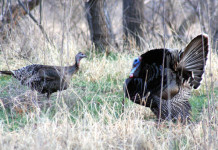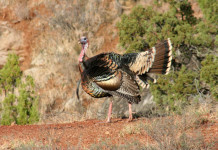Exotics have been a staple on the Texas landscape for roughly a century, with game ranches stocking hundreds of thousands of antelope, deer and other horned critters of all shapes and sizes.
In most cases, the exotics are welcome for the thousands of dollars per head they can bring via hunting. However, in the case of Texas’ Garner State Park, one of the state’s most sought-after exotic species is being targeted and destroyed at will.
Axis deer, which aren’t native to the Hill Country but thrive there and compete with critters for food, have become a nuisance at Garner, leaving park officials with little choice but to take strong measures to remedy the problem, according to a Texas Parks & Wildlife Department news release. An estimated 200 axis deer inhabit Garner and efforts to control numbers through scheduled public hunts have been insufficient. More than 100 permitted public hunters annually averaged just 43 axis deer harvested during the last five years, according to the release.
Park officials are working to further reduce axis numbers through controlled harvest by an outside entity. The tactic proved efficient and effective during a pilot harvest last season, removing 56 axis over the course of a few days.
TPWD initiated a two-year pilot controlled harvest project last year to evaluate contract harvests as an additional method of invasive animal control at two state parks, Garner and South Llano River. For this pilot project, TPWD has entered into a services contract with a private company to remove exotic animals in exchange for the harvested meat at no cost to the state.
“Managing axis deer populations is consistent with our mission and is critical for maintaining healthy habitats that support native wildlife diversity,” said Greg Creacy, Regional Natural Resources Coordinator for Texas State Parks, in the release.
TPWD has worked to maximize use of public hunting as a wildlife management tool, while balancing the needs of thousands of park user groups who visit the park each month. Hunting activities are limited to those times of the year when visitation is at its lowest, typically weekdays during winter months, according to the release.
“Many years of conducting public hunts on these areas have shown us that public hunting, alone, is insufficient for controlling our invasive deer populations,” said Creacy, in the release. “While we are still evaluating the effectiveness of this new contract harvest initiative, it is likely that both public hunting and contract harvests will have to be sustained in order to reduce axis deer numbers. The contract harvests compliment the public hunts, and we are definitely not planning to exchange public hunting opportunity for contract animal harvests or even reduce our public hunt initiatives.”






















